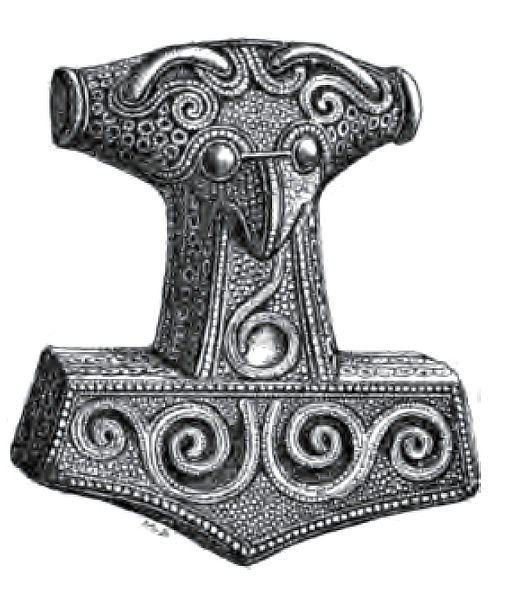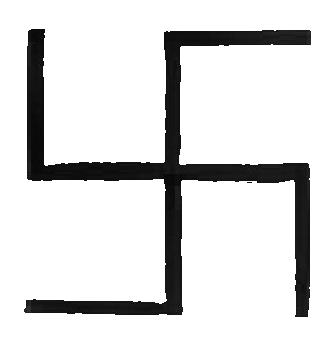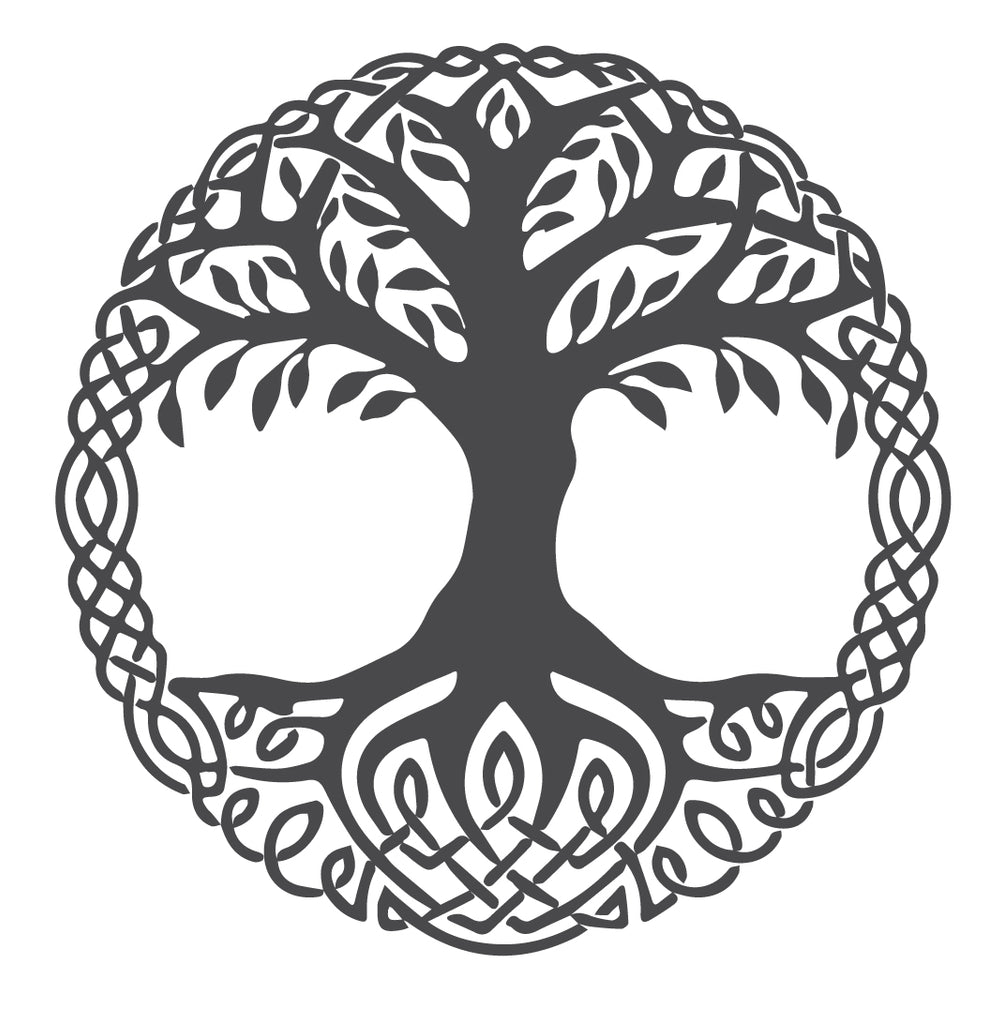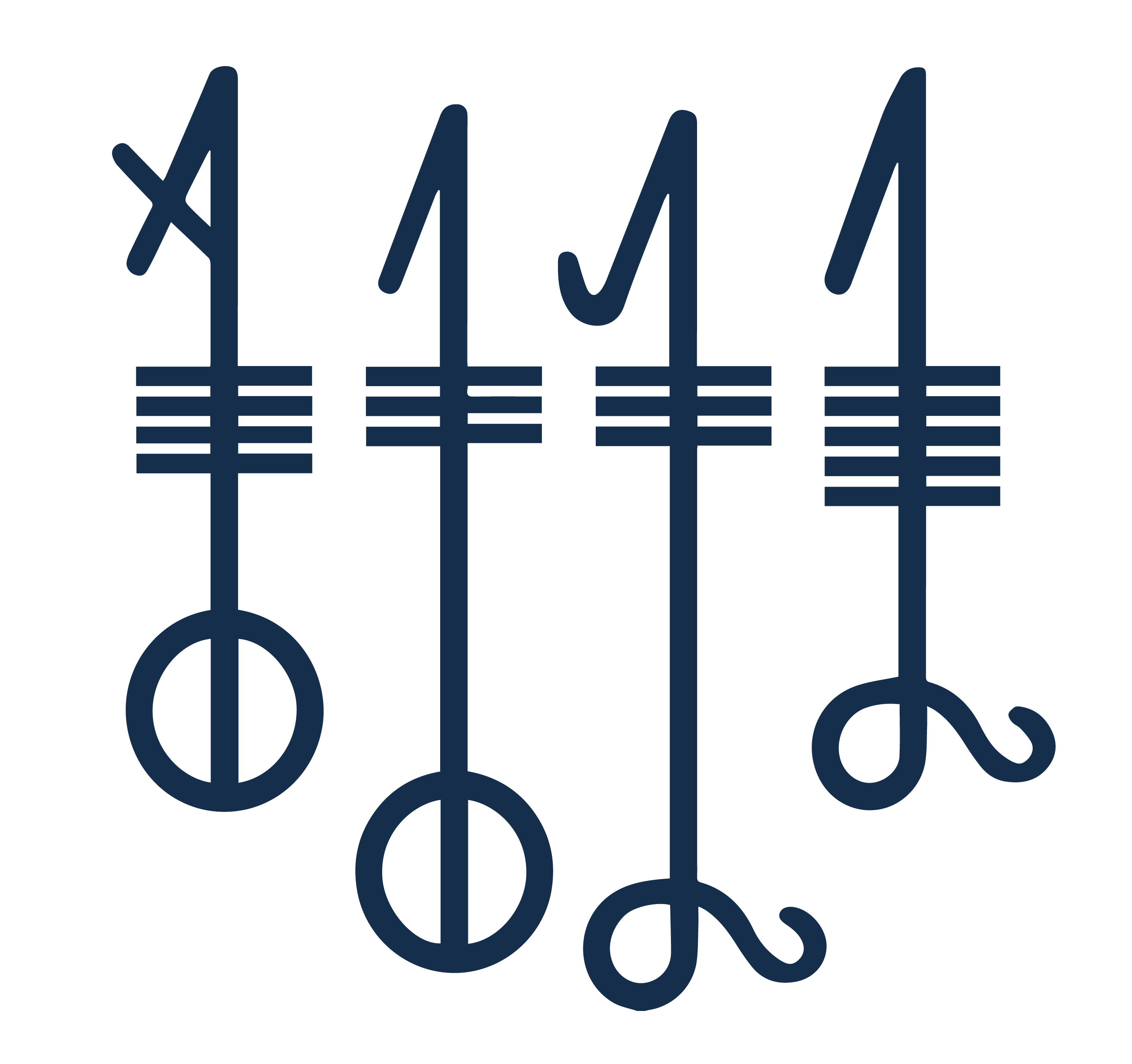The strong history of Vikings left a lasting impact even in today’s modern civilization. Moreover, Viking culture isn’t dead. It still exists not only in Scandinavia but also in many parts of the world. Many are also interested in this culture after watching popular shows like Vikings. It reaches the point where they want to learn more about the traditions, symbols, runes, and other information about Vikings.
If you are also interested in Vikings, start by learning their symbols. Here’s what some of the Viking symbols look like and their meanings. Spoiler alert! They all look cool!
Valknut

Also known as Odin’s Knot, Valknut represents a person’s transition from life to death. It also means the god’s power to bind and unbind. Valknut can usually be translated as “knots of those fallen in battle. For this reason, this symbol is found in many Viking tombs, either drawn or placed next to them.
You can identify Valknut as a symbol with three interlocked triangles. These triangles are usually shown in a Borromean style or single line. It is quite a special Viking symbol because its three triangles create nine points, representing nine words in northern mythology.
Some people might consider Valknut unlucky because of its association with death, but many get Valknut tattoos for a classic reason. It means they are honoring a deceased friend or loved one—particularly those who died in a war since this Viking symbol is associated with battle slain.
Aegishjalmur

Aegishjalmur is among the most powerful Viking symbols in Norse mythology. Its name came from Aegis, a vicious giant living in the sea. It is why it is believed that Aegishjalmur represents strength and courage because of its connection with the sea, an unstoppable force.
This Viking symbol is also known as “The Helm of Awe.” It has eight spiked tridents with curved prongs that point outwards. At first glance, its spiked tridents look like they are protecting the central point from surrounding hostile forces. In the past, Vikings would often draw Aegishjalmur on their foreheads before battle to ask the gods for protection and to prevail over enemies.
Drawing this symbol might also mean that the warrior is asking for sure victory or being taken to Valhalla. In Norse mythology, Valhalla is a majestic hall where people who die in combat go to be with Odin, a Norse mythology god.
Mjolnir

Mjolnir is the name of the famous weapon of the god Thor, also called Donar in Germanic. Since Thor used it to protect people from chaos and the land from giants, Mjolnir is considered a powerful symbol of safety and protection for Viking warriors. Aside from that, it is recognized as a powerful symbol in Norse mythology.
But besides strength and power, this Viking symbol also represents fertility, good fortune, and growth. Mjolnir was used as an emblem to hallow marital homes and weddings. Thor is believed to bless couples using Mjolnir during the marriage to grant them fertility. In relation to this, Thor is a deity of earth’s fertility, so farmers worship him.
Vikings give much importance to this symbol. Even after the conversion of Scandinavians to Christianity, they still wear Mjolnir amulets along with their Cross necklace. Today, this Viking symbol is a famous symbol that represents Germanic Neopaganism faith.
The Swastika

If there is one Viking symbol that almost lost its real meaning, that is the Swastika. For Vikings and Indo-Europeans, this symbol means blessing and consecration. It has been a positive symbol and encouragement of life. Its name even means “conducive to well-being,” derived from the Sanskrit svastika.
Throughout history, this symbol many cultures around the world adopted it. Religions like Buddhism, Hinduism, and Jainism used the Swastika as a symbol. It was also used in ancient Asiatic culture as an art pattern. It was used in architecture in the Baroque, Medieval, and Renaissance periods.
Unfortunately, Adolf Hitler included the Swastika on the flag of the Nazi party. It was the moment when the positive connotation of this ancient Viking symbol was forever erased in the people’s minds. Today, most people see the Swastika as a reminder of World War II, genocide, military brutality, and fascism.
Web of Wyrd

Vikings also believed in fate. The Web of Wyrd or the Skuld’s Net backs it up as this famous symbol symbolizes the matrix of fate. In Norse mythology, this symbol is believed to be woven by the Nori, the Shapers of Destiny. Just like in weaving, while the fibers are woven together, they transform into the thread of people’s lives.
Since the Web of Wyrd has all the runes and nine interlocking staves, the Vikings believed that it represents the possibilities of past, present, and future interconnection. For Vikings, nine is a sacred number, so for them, the Web of Wyrd is of great importance because of its nine staves.
This symbol also reminds the Vikings that their past actions determined their current life and will shape their future. You can think of it as parallel to karma and fate.
Yggdrasil

Yggdrasil is a cosmic tree in the center of the world whose branches cover heaven and earth. This evergreen ash tree represents Yggdrasil, which Vikings call a tree of life. This symbol suggests that water is the source of life and that nothing dies; everything runs in a constant state of transformation.
Yggdrasil also translates to “horse of yggr” or “horse of Odin” because it is the three which Odin bound his horse. However, it could also translate to “tree of terror” because it is where Odin hung and sacrificed himself for wisdom.
In Norse mythology Yggdrasil is a powerful symbol that connects the nine worlds: Asgard, Midgard, Vanaheim, Muspelheim, Jotunheim, Svartalfheim, Alfheim, Helheim, and Niflheim. More so, it is believed that the gods source their youth from this tree. For the Vikings, Yggdrasil will help preserve and bring back life to the world after Ragnarok.
Vegvisir

Vegvisir translates as “That which shows the way,” It is also called the Norse/Viking compass. This Viking symbol is often confused with Aegishjalmur, another symbol with tridents. But instead of tridents, Vegvisir has rune staves, and none of its arms are the same.
For Vikings, Vegvisir is an essential assistant. The reason is that Vikings believed the Viking compass would guide people who lost their life path. Considering that Vikings often face different sea disasters, it is understandable that they want to have a magical symbol to help them find their way. They would draw it in their ships before sailing to guarantee their safety.
But aside from the Viking compass, the Vikings have instruments like disc, sunstones, and UUnartoq to keep them in the right direction. Modern technologies are constantly improving navigation tools like these Viking navigation instruments to help sailing easier and safer.
Svefnthorn

Svefnthorn, also known as the ‘sleep horn,’ is a spell used by the Vikings to make someone fall into a deep sleep. However, it is unclear if it only represents the spell or if this symbol has a physical role. Its magical properties and meaning vary in every myth. But one thing is for sure; this Viking symbol is used to put their enemies to sleep.
Svefnthorn is among the most famous symbols in Norse mythology because it is frequently mentioned in Norse sagas such as “The Saga of King Hrolf Kraki.” In the Saga of the Volsungs, Valkyrie Brunhild fell into a deep slumber because Odin, the master spellcaster, used Svefnthorn. Only when a hero successfully crosses a circle of fire created by Odin around Valkyrie can make her wake up again. Meanwhile, people today buy accessories with Svefnthorn engraving to have an undisturbed night of deep sleep.
Gungnir

Gungnir is the name of Odin’s magical spear. It is a name given by the dwarves who forged it, considered the most skilled blacksmiths in the cosmos. Odin is the god of war, and most Viking warriors who went into battle carried a spear. Most contemporary works described Odin as having a spear in hand.
Moreover, Odin started the war between the most well-known groups of gods, Aesir and Vanir, by throwing his spear over the Vanir gods’ heads. The Vikings also performed their human sacrifice rituals to Odin using a spear. They performed it that way to follow what Odin did when he wanted to gain knowledge of the runes.
What Odin did is that he stabbed himself simultaneously using the Gungnir before he hanged himself. The Vikings repeatedly made this gesture, thinking it would grant them Odin’s protection during war.
Troll Cross

Also known as the trollkors, this Viking symbol takes the shape of an Odal or Othala rune. For Vikings, the troll cross symbolizes protection. They usually wore it around their necks, believing it would significantly decrease their chances of falling into danger. It is also used as an amulet to ward off trolls, dark magic, and evil elves in Norse mythology.
Similar to how Vikings used it, the troll cross is also worn for protection against malevolent magic in Swedish folklore. The first troll cross recorded was in the 1990s. It is when Sweden’s Kari Erlands discovered this symbol at her grandfather’s barn and converted it into a piece of jewelry.
In the twentieth century, the troll cross became a symbol of family, home, and everything linked with it. It is also commonly seen where cows are kept as a protection against trolls.